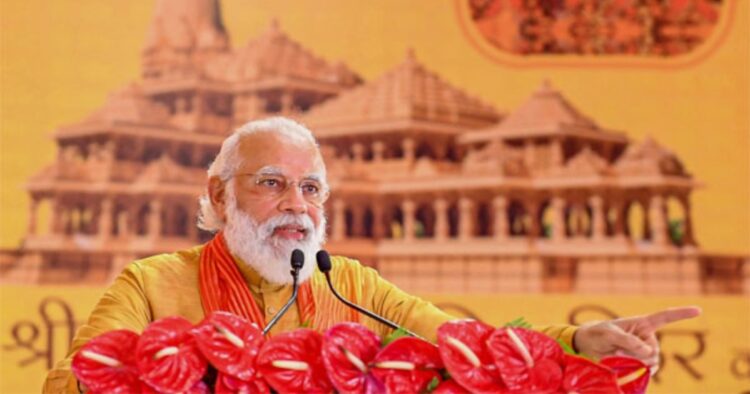Ayodhya, the sacred city in Uttar Pradesh, witnessed a historic moment as Prime Minister Narendra Modi inaugurated the Maharishi Valmiki International Airport on Saturday. The inauguration followed the launch of the redeveloped Ayodhya railway station and the flagging off of two Amrit Bharat and six Vande Bharat trains, with some events taking place virtually.
The first phase of this state-of-the-art airport, developed at a cost exceeding ₹1450 crore, boasts a terminal building covering 6,500 sqm, designed to serve around 10 lakh passengers annually. Notably, the facade of the terminal building mirrors the architectural style of the upcoming Ram Mandir in Ayodhya.
Inside the terminal, local art, paintings, and murals depicting the life of Lord Ram adorn the walls. The airport incorporates various sustainability features, including an insulated roofing system, LED lighting, rainwater harvesting, landscaping with fountains, a water treatment plant, sewage treatment plant, and a solar power plant, aiming for a GRIHA 5-star rating.
The inauguration of this airport is expected to enhance connectivity in the region, fostering increased tourism, business activities, and employment opportunities.
Key Features of Maharishi Valmiki International Airport
The airport recently received operational approval from the Director General Civil Aviation (DGCA). In its first phase, the 2,200-metre-long and 45-metre-wide runway can accommodate Airbus A320, ATR-72, and Bombardier private jets. The second phase will involve expanding the runway to 3,200 meters, opening the airport for international flights.
Equipped with a Doppler Very High-Frequency Omni Range (DVOR) radio navigation system, the runway aids aircraft in determining their flight position and direction using VHF signals.
Built at a total cost of ₹1462.97 crore, the airport features unique architecture following the ‘Nagara Style,’ depicting Lord Ram’s life and culturally enriching the passenger experience. The main building showcases seven pillars intricately representing significant episodes of the Ramayana.
Outside, a symbolic mural featuring a bow and arrow signifies Lord Ram’s enduring efforts, while the landscaping incorporates colors representing the five elements (Panch Tatva). Additionally, the airport boasts a 3-storey high ‘Ram Darbar’ and a depiction of the Sita-Ram marriage crafted in Madhubani painting.
Flights and Future Plans
Starting from January 11, three daily flights between Ahmedabad and Ayodhya will operate. The first flight between Delhi and Ayodhya is scheduled for January 6. Following the commencement of initial operations, plans include the introduction of international flights, connecting Ayodhya to the global circuit, marking a moment of pride for the city.

















Comments